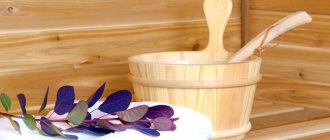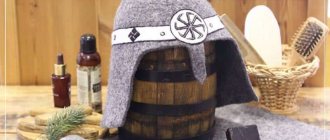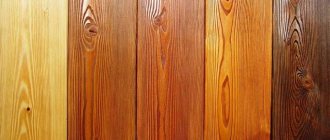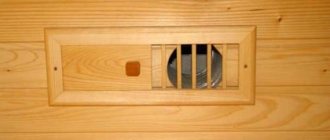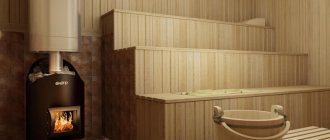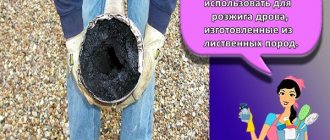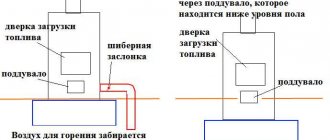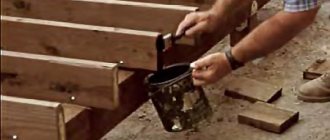Basic Rules
How to clean soot in a bath? There are certain rules for this. For example, wooden surfaces covered with a layer of soot should not be wetted.
Wood is a hygroscopic material that quickly absorbs moisture. Together with water, everything that has settled on the surface - soot, soot, bodily fluids, etc. - will be absorbed into the structure of wooden elements. Once the dirt is absorbed into the surface of the wood, it will be almost impossible to clean the shelves in the bathhouse, walls, floor or ceiling.
Therefore, when deciding how to clean soot from walls or floors in a bathhouse, you should categorically refuse to use such substances and materials as:
- laundry soap;
- water;
- sponges;
- spray guns.
All of the above products can only be used for final cleaning of wooden surfaces, when the carbon deposits have already been cleaned dry.
All work on cleaning the bathhouse from soot and soot must be carried out using special protective equipment:
- blind safety glasses;
- respirator;
- thick rubber gloves.
All this will help prevent combustion products from entering the respiratory tract.
What you need to know about soot
The properties of soot directly depend on what materials were burned.
For example, wood releases more resinous soot; when plastic burns, it is caustic and sticky. In any case, carbon deposits contain a certain amount of fat, so you can’t just wipe it off the surface. If you try to wipe off the soot with a regular napkin dipped in water, the situation will only get worse. To remove soot, you must use fat-soluble products.
Soot particles are very small. They easily penetrate into porous materials, from where they are difficult to remove.
Among other things, fumes are toxic. It is especially dangerous to stay indoors for a long time after a fire. When cleaning, it is recommended to wear a respiratory mask and protect your hands with gloves. When cleaning the ceiling, wear safety glasses to prevent the suspension from getting into your eyes.
Note! Laundry soap and hot water will help remove soot from your skin.
Cleaning walls and ceilings
Solving the problem of how to clean soot in a bathhouse begins with a vacuum cleaner. To do this, you need to walk it on wooden surfaces. Next, you need to carefully sweep away the soot and soot from the walls and ceiling with a broom.
Prepared surfaces must be cleaned with specially impregnated sponges. They are sold in hardware stores. During the manufacturing process, such sponges are impregnated with special compounds that destroy soot and soot.
Sponges get dirty quickly, so you need to purchase several of them at once. You can extend the life of use by cutting off the soiled layer of the sponge. When the soot and soot have been completely removed, you can clean the surfaces of the walls, floors and ceilings with aqueous solutions of detergents.
Abrasive powders cannot be used in this case. They spoil the structure of wooden surfaces.
On a note! It is advisable to use degreasing powders and/or gels. They are added to hot water.
To clean hard-to-reach areas, it is better to use a mop with a long handle.
Surfaces are washed 2-3 times. In this case, the water must be changed periodically, adding a new portion of detergent to it.
When the question of how to clean the lining in a bathhouse from soot has been resolved, you need to rinse off the cleaning solution with clean water. For this it is better to use running water. It is better to feed it from a hose under low pressure.
At the end of the process, wipe the washed surfaces dry with a clean soft cloth. You can use an old bath towel. A large amount of moisture or poor thermal insulation may cause the lining to turn black. In this case, the answer to the question of how to clean the lining in a bathhouse will be a grinding machine, but this is if the darkening has affected only the surface layer of wood.
To clean walls lined with clapboard, you will need an angle grinder with a power of no more than 1 kW and a flap wheel with a diameter of 125 mm (grit size no more than 40 units). The lining is sanded in such a way as to remove the darkened layer to a depth of approximately 3 mm.
If the blackness has been absorbed to a great depth, the lining can be painted. But not in the steam room. No paint coatings are used here at all. You can replace the darkened lining partially or completely with new material.
Impregnating compositions for bleaching darkened wood, prepared on the basis of chlorine, are not recommended, since the carbon particles that determine the dark color of the walls are practically not discolored by compositions containing active chlorine.
Over time, unaesthetic dark spots appear on the surface of the bathhouse logs on the outside, which spoil the appearance of the structure.
Liquid bleach can be used to remove such stains. It is applied to a surface that has been previously cleaned of dust and dirt. For work, brushes with artificial bristles are used, which need to be changed periodically, because the cleaning composition corrodes them. Before applying, you need to test its effect in an inconspicuous place.
The product is carefully distributed over the entire surface and left for some time according to the instructions on the package. Then you need to rinse the surface with running water from a hose. Next, the bathhouse is ventilated to remove the pungent odor of bleaching agents.
If the blackening penetrates to a greater depth, the logs can be sanded with a grinder. In this case, safety precautions must be observed.
To clean the shelves in the bathhouse, you can use a car wash. Water is supplied through it mixed with air and under high pressure. This helps to easily remove the top layer from darkened wood. In this way you can also clean the floors, walls and even the ceiling in the bathhouse.
To thoroughly clean the floor in the bathhouse, you can use a plane, preferably with an electric drive. First, the floorboards must be carefully removed and thoroughly dried, then processed with a plane. In this case, the top layer of wood on each side is removed to a depth of 5 to 10 mm.
This type of cleaning often results in sharp edges on the floorboards. They can be removed with a belt or vibratory sander. You can also use these devices to clean up darkened wood instead of using a plane.
If the darkened layer of wood is thin, you can simply sand the surfaces with sandpaper. An electric drill with a special attachment will help make the process easier. You can only work with completely dry surfaces.
This method will help you get into corners and other hard-to-reach places. There is no need to remove individual elements.
This treatment is often recommended when answering the question of how to clean aspen seats and other wooden surfaces in a bathhouse. After processing and sanding with sandpaper, they will not only be clean, but also absolutely smooth.
Bathhouse shelves: how to treat them without causing harm to health?
Let's divide all impregnations into two conditional camps , in the first of which there is something that should not be used at all or with restrictions, in the second - the most safe.
Which ones are not recommended or can be used with limited use?
So we get to the important thing: how to distinguish between the harmfulness of a composition? First of all, let us agree to believe that what is harmful to lower forms of life will most likely be harmful to higher ones . In any case, this rule works when it comes to antiseptics. Allowing the antiseptic to evaporate under the influence of high temperature and breathing it in, and sitting on the surface treated with it... is not the best solution.
As for bleaches based on chlorine or hydrogen peroxide, the following should be taken into account: both are harmful to health, but both erode in a reasonable time. Peroxide generally decomposes into innocent water and oxygen. This happens even just in the light.
Read also Strawberries Albion variety description photo reviews
You should absolutely not use anything from the list of exterior impregnations - this is something that cannot be used inside any room. But this is an obvious thing. But a variety of varnishes, including those that are actively promoted as suitable for use in baths and saunas...
Firstly, if you choose a varnish, then the one that is said to withstand the high temperature of the steam room. All the rest, if they are suitable for a bathhouse, are somewhere in its other rooms.
Secondly, varnish is not at all recommended for coating shelves . Perhaps someone will cover the window frame with it - both the area is small and the tree is protected.
In general, varnishes, antiseptics and fire retardants are not for the steam room !
Which ones are completely safe?
And yet I would like the wood in the steam room to last longer. And if it is not wetted with water, its preservation will increase. This means that we can recommend as completely safe those impregnations that repel water and do not form a film on the surface.
Actually, there are no other safe options - only some kind of oil wax or special oil for bathhouse shelves.
Why does the chimney become dirty?
How to clean a chimney in a bathhouse depends on the nature of the contamination. With use, types of clogging may occur such as:
- soot and soot, which accumulates very quickly when burning household waste;
- condensation that forms due to irregular use of the bathhouse;
- foreign objects accidentally falling into the chimney.
All of these types of contaminants ultimately impede the free circulation of air and the escape of smoke through the chimney. This may cause carbon monoxide poisoning. Condensate is a weakly concentrated acid solution. Under its influence, the chimney masonry begins to collapse from resinous deposits.
If you use a sauna regularly, you need to make a schedule and determine in advance when and how to clean the pipe in the sauna. Carrying out such work regularly will preserve the chimney and stove and allow you to use the sauna without any problems.
Let's first figure out what you shouldn't do
The first rule is that there is no need to wet the surface with water that is contaminated with soot. Perhaps after this you will be able to remove the top thick layer of plaque, but some of it will certainly be absorbed into the pores of the wood, and getting it out from there will be very problematic.
You should also not use: soap, spray bottle and sponges for household purposes.
Do not put off the cleaning process until later if you see that the color of the wood has noticeably darkened.
Every time you heat the bathhouse, condensation will collect and at high temperatures, soot and soot will penetrate into the wood with moisture. Those. The process of wood darkening will accelerate.
How to clean a chimney
The chimney and pipe in the bathhouse are cleaned chemically and/or mechanically. In a special store you can purchase liquids and/or powders for cleaning the chimney. Detailed instructions are printed on the packaging. After reading it, it will become clear how to clean a pipe in a bathhouse.
A good answer to the question of how to clean soot in a bathhouse that has accumulated in a chimney would be a “log chimney sweep.” It is impregnated with special chemicals. During combustion in the furnace, smoke of a special composition is released. As a result, the soot becomes soft and pliable. After 2 or 3 days it can be removed with brushes without much difficulty.
For mechanical cleaning of the chimney you will need the following tools and devices:
- rope and/or rope;
- weight (ball);
- brush-ruff (preferably on a thin metal cable).
First you need to check the safety of the structure. Then you need to remove any objects that accidentally got into them from the pipe and chimney. For this purpose, a brush-ruff is used, selected according to the size and shape of the pipe.
A special modern brush will make cleaning work easier. It comes with a handle consisting of several links. This allows you to adjust the length of the brush as needed. During cleaning work, any brush must be moved inside the pipe, gradually moving it lower and lower.
Such work must be performed in a special set of clothing, which must include:
- overalls or suit;
- respirator;
- gloves;
- protective glasses.
If the chimney is not very dirty, you can call a specialist. He will clean it using a special high-power vacuum cleaner. This will remove soot from the chimney through the firebox opening. The use of special means will help resolve the issue of how to clean the chimney of contaminants and how to clean the pipe of soot in a bathhouse.
We recommend
You can buy a product for cleaning bath soot from walls in a specialized store of our company.
The concentrated water-based product has an enhanced effect on soot, an environmentally friendly composition, and high resistance to temperature changes.
On the company’s website you can view the product catalog and order any batch of detergent for cleaning soot from the manufacturer at affordable prices.
DOCKER MAZBIT PLUS
- a concentrated product for cleaning surfaces from the effects of fire. Designed for effective quick cleaning of any surfaces (wood, concrete, plaster, stone, tiles) from various contaminations by combustion products, such as soot, soot, carbon deposits.
Without smell. Does not contain chlorine or acid.
More details
How to clean soot after a fireHow to clean soot from fireclay bricks
MAZBIT PLUS - Concentrated product designed to clean surfaces from the effects of fire.
Designed for effective quick cleaning of any surfaces: general construction materials: wood, concrete, plaster, stone, tiles from various contaminations by combustion products: soot, soot, carbon deposits.
More details
It is very important to monitor this moment and try to prevent it in time.
The quality of the wood may change, and it will no longer be possible to restore its original beauty.
At first glance, it may seem that cleaning the bathhouse from soot on your own will be very difficult, especially if the soot deposit is already very old. But actually it is not.
DOCKER MAZBIT PLUS is a concentrated product for cleaning surfaces from the effects of fire. Designed for effective quick cleaning of any surfaces (wood, concrete, plaster, stone, tiles) from various contaminations by combustion products, such as soot, soot, carbon deposits. Without smell. Does not contain chlorine or acid.
More details
How to clean soot after a fireHow to remove soot from a brickHow to clean soot in a bathhouse
Cleaning the tank
Due to the hardness of tap water, the question periodically arises of how to clean the tank in a bathhouse from scale that settles on the walls and bottom. Since scale is formed from lime deposits, it must be cleaned with acid.
Acid can only be used of organic origin. For example, lemon or vinegar. Any inorganic acid is unsafe for the metal from which the tank is made. It should be remembered that the amount of acid used to clean the tank should approximately correspond in weight to the amount of lime deposits on the walls of the heating tank.
On a note! Installing a special filter at the inlet will help prevent the formation of large amounts of scale.
The water passing through it will be purified from a significant amount of impurities. This will greatly reduce the level of scale formation.
Cleaning heating equipment
Soot can accumulate on the walls after a fire. It often forms around the fireplace. Before you start cleaning the walls from soot, the excess must be brushed off with a broom, brush or vacuum cleaner.
Next, the following substances will help you clean the walls from soot yourself:
- Special sponges soaked in soot-soluble liquid (sold in hardware stores).
- Alcohol. Napkins or gauze are soaked in it and carbon deposits are removed from the walls step by step.
- Petrol. This liquid also dissolves soot perfectly. Gauze is moistened in it and the surface of the walls is wiped.
The listed products can be used to clean any other surfaces (including the ceiling) that cannot be washed well with ordinary soap. In order not to stain the floor when cleaning the walls or ceiling, it is covered with plastic film or old newspapers.
Note! Heavy deposits of soot can rarely be washed off the walls without leaving a trace. Even if the blackness disappears, erased traces remain on the whitewash and wallpaper. Most likely, you will have to refresh the walls and cover them with new finishing material.
We suggest you read: What to use to glue tiles to a stove
Soot also settles on the glass. Any special glass cleaner will easily remove carbon deposits. Before using it, it is necessary to remove excess soot with a cloth, moistening it in a soap solution.
If there is no glass cleaner, then drop a little ammonia or vinegar into the water and finish washing the windows. To give the glass a crystal shine, use special microfiber cloths or plain newsprint.
Wood is a highly porous material. Soot particles can penetrate so deeply into its microholes that simple surface washing will not help. First, you should try to wash off the carbon deposits from the wood using any of the above methods (soap solution, alcohol, gasoline, ammonia solution). If the blackness does not go away, there is only one option left - sanding the wood.
For small surfaces, a piece of sandpaper will suffice. Larger areas are treated with a grinding machine.
When trying to put out a fire or even when cleaning a room from soot, you can get your clothes dirty. But there is no need to panic, soot is easily removed from fabrics. You don't need any special tools. Simply soak the item in soap or powder and then wash it in the washing machine at the maximum temperature allowed for the fabric.
For white items, you will most likely need to use bleach.
Note! Household carpet cleaners will help remove soot from the carpet. A washing vacuum cleaner will make the task easier.
Often, soot particles settle on the sauna stove and on the objects that surround it. What to do in this case? First, decide what material the stove or boiler is made of. After all, the methods for cleaning soot from different surfaces differ significantly! We suggest we talk about how to remove soot from bricks and metal structures.
Cleanliness in the steam room
The steam room in the bathhouse requires special attention. After all, when using brooms, particles of plant pigment from stems and/or leaves are absorbed into wooden shelves and walls along with moisture. Therefore, the question inevitably arises of how to clean the steam room in a bathhouse to give it a fresh and pleasant look.
The problem of how to clean linden lining in a bathhouse, especially in the steam room, can be solved in different ways. If the wood darkens slightly, you can use special liquid detergents and/or paraffin oil.
The cleaning liquid is applied to the darkened surfaces manually using a piece of foam rubber or a regular sponge. The pre-detergent must be diluted with water. How to do this is detailed in the instructions.
Paraffin oil is gradually applied to pre-dried surfaces using a dry sponge. In this way, you can not only clean the lining in the steam room, but also give the wood water-repellent properties. This will protect the wood trim and various items from severe and rapid contamination.
How and with what to cover the shelves so that the coating lasts longer?
The durability of the coating on a wooden surface depends not only on the composition of the product applied, but also on the tool used, application conditions, number of layers, etc.
What is better to process - tool
If you purchased a store-bought product for bath shelves, the instructions will tell you what to use. However, there are not many options.
Either it will be a brush (pay attention to the instructions - in some cases they write that it should be made of natural bristles ), or a clean cloth. In some cases, you can use a sprayer.
Again, different impregnation compositions can be either ready-to-use or require heating.
If you use homemade impregnation , then before starting work you need to heat it to 50-60 degrees.
The brush is used only if the impregnation is sufficiently liquid . The stripes it applies should not overlap so that “steps” are not created (this applies to hardening impregnations). The brush is very convenient for applying oils.
A cloth is better for waxing . When rubbing the thick mixture, try to distribute it evenly, but you don’t have to remove the excess right away. If, after applying the layer, you heat the oven, then the classic “waxing” will occur - the wax itself will spread as it should. (When waxing items not for a bath, they are heated with a hairdryer or burner.)
How many layers
The number of layers of impregnation is also usually specified in the instructions. Since the means are different, we will only venture to roughly name the number of layers and the time interval between them. Let's say it's two coats applied one hour apart.
The number of layers depends on both the properties of the impregnation and the porosity of the wood. The more pores, by the way, the higher the consumption of the product - it can increase by about two times.
Regarding the drying time : they are also different, in some cases a day is enough (according to the instructions), in others the time can last up to two weeks.
How often should the coverage be renewed?
The answer to this question depends on what tool you used. The fact is that oil impregnation, although it is easier to apply than wax impregnation, also lasts much less than the latter.
So, for renewing a layer of oil impregnation, the period is called from six months to 2 years, and for a wax impregnation - several years (without specification).
However, you should focus on the condition of the wood. If you used tinted impregnation, then you can see from it exactly where it came off. If the impregnation is colorless, focus on the condition of the wood - has it become wetted with water and swollen from it? In these cases, of course, there is no need to wait for the time promised by the manufacturer.
Bath water purification
The required amount of water for hygiene procedures is often provided by drawing water from a nearby reservoir, well or borehole. Before use, it is necessary to thoroughly clean the bath water from various impurities, silt, sand, and small pebbles.
The main methods of water purification are filtration and sedimentation. You can buy a special water filter in a store or make it yourself. For this you can use a fine mesh.
To settle, water is poured into a large tank about a day before its intended use. During this time, all impurities will gradually settle to the bottom of the tank. From above it will be possible to take clean water suitable for hygiene procedures.
The basic rule: the settled water should be taken from above, trying not to raise sediment. The water is not used until the end. It is better to pour the remains into the drainage well along with the sediment. Therefore, you need to prepare water with a reserve.
We remove soot from smooth, washable surfaces
Plastic laminated coverings, linoleum, and varnished interior items do not contain pores, so dirt disappears from them quickly. To quickly remove soot from such coatings, any detergent is sufficient: laundry soap, washing powder, liquid soap, even dish gel will do.
A soap solution is diluted in hot water. How to remove soot depends on the amount of dirt. It will be convenient to wash a cabinet or other small piece of furniture with a soft cloth or gauze. For small items it is better to use a sponge. And for the floors you need rags.
A napkin/sponge/rag is moistened in a soapy solution and the smoked areas are washed. If there is a lot of carbon deposits and the water quickly turns black, change it. And so on until all the soot is washed away. Finally, the surface is washed with clean water.
We invite you to read: Construction of a Turkish bath (hamam)
Soot deposits on walls and ceilings are removed in a few steps. Be sure to cover the floor with cellophane, and it is recommended to seal the joints with tape so that the removed soot does not soak into the floor. Plaque can be removed with a vacuum cleaner or a dry broom using jerky movements, and then treat the walls and ceiling with a specially impregnated sponge.
The chemical composition is left on the surface for a specified period of time in accordance with the manufacturer’s recommendations, and then washed off with warm water along with any remaining soot and soot. If necessary, repeat the procedure. After completing the treatment, allow the surface to dry thoroughly.
Brick
How to remove soot from a brick stove in a bathhouse? One of the most effective methods is to use a simple detergent and sponge. You need to take the detergent, dilute it with water and whisk until a thick foam forms. The treated surface should be left for 10-15 minutes, then rinsed with water.
Another great way is to use vinegar essence. You will need tap water and table vinegar. For one glass of vinegar you need to take two glasses of water. Don't forget to use gloves! Apply the solution to the brick, leave for 10 minutes, then rinse thoroughly. How to wash off soot if it has penetrated deep enough into the brick pores?
Tags: bathhouse, wood, soot, wash off
« Previous entry
Metal
Cleaning metal structures is a fairly simple procedure: you will need a clean, damp sponge and soap solution. If the soot layer is too dense, you can use fine river sand. True, it must be borne in mind that abrasive materials perfectly clean metal, but at the same time they contribute to the appearance of corrosion and can destroy it.
For this reason, experts recommend using abrasives only if no other cleaning method is suitable. After this, it is necessary to paint all damaged surfaces. Neutral chemical compounds and removers are much better suited, because they will not only clean the metal surface, but also will not damage it. Among the folk methods, one can note the purification of metal using water in which citric acid is diluted, or Coca-Cola.
